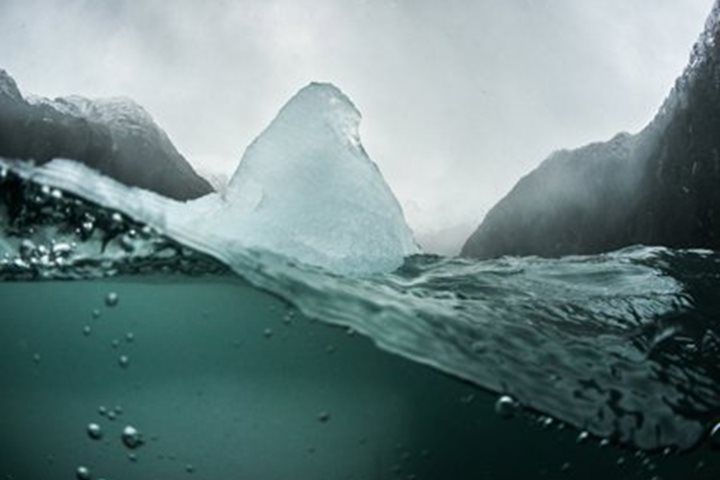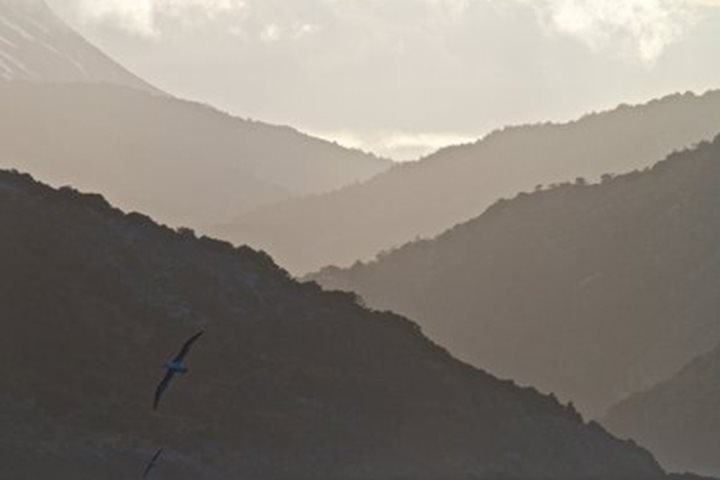Before retiring last night an announcement from the Bridge informed us that we were passing Cape Froward, the southernmost tip of the South American mainland, from which it would be possible to walk to the westernmost point of Alaska without getting one’s feet wet, although most unlikely without acquiring a few blisters. As we passed overnight through the Magellan Strait and approached its end, the ship’s motion increased considerably, for a short period of time, reminding us of that long-running misnomer which is the Pacific Ocean.
The scenery we awoke to was spectacular: snow-capped mountain ranges to either side of the vessel, dramatically lit as spring squalls passed through the fjords. There was plenty of bird activity: albatross and South American terns together with skuas, giant petrels and the ubiquitous fulmar. Our destination for the day is Puerto Natales, so we returned to the protected waters of Canal Smythe and by some skillful navigation (aided by our onboard Chilean pilots) approached the Kirke Narrows at the top of the tide to make the dramatically narrow transit with the minimum of current running through the channel. En route we were treated to the spectacular features of an active glaciated landscape with hanging valleys and tributary glaciers with Andean condors soaring overhead.
It was good day to marvel at the feat of navigation by Ferdinand Magellan’s expedition of 1519 -1521 which succeeded in circumnavigating the globe for the first time. It took most of the month of November 1520 to find a way through the maze of channels that lie between the continental mainland and Tierra del Fuego to the south, the latter named by Magellan for the fires that were so characteristic of the lifestyle of the Yanama people. The western ocean was unusually calm when Magellan debouched in Trinidade from the channel that now bears his name and the Pacific appellation has been used ever since. Some 373 miles of intricate channels had been traversed between the eastern and western oceans. We also now use the term Magellanic for austral fauna and flora, thus preserving the memory of this remarkable navigator.
The expedition leader did not himself succeed in making the circumnavigation, being killed in a skirmish on the island of Cebu in what are today’s Philippines on April 17, 1521. The commander of Vittoria, a smaller nau in the expedition’s fleet, one Capt Juan Sebastian el Cano had greatness thrust upon him in this regard, returning to Seville in triumph later in the year. To whom then should the credit be given for being the first person to circumnavigate the globe? The answer to that question is: to an anonymous Moluccan slave who was on the crew list for the expedition when it departed from Seville and who was returned home by the expedition in the spring of 1520.









